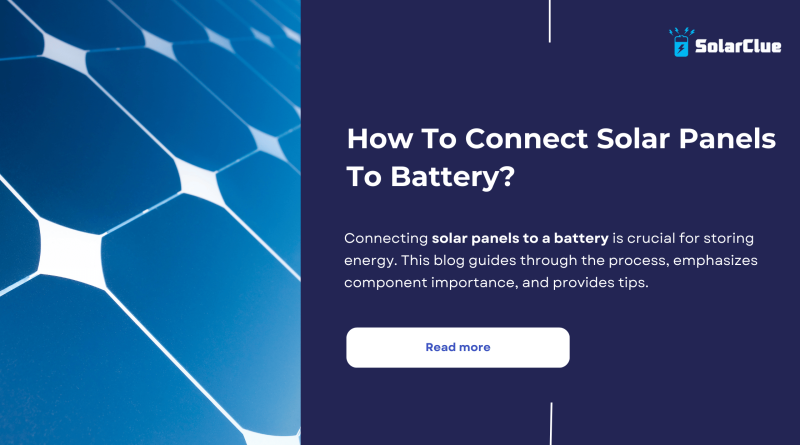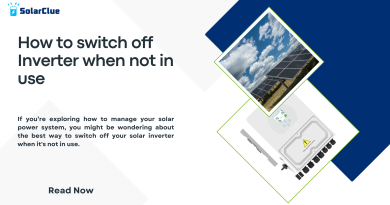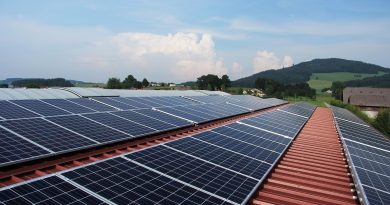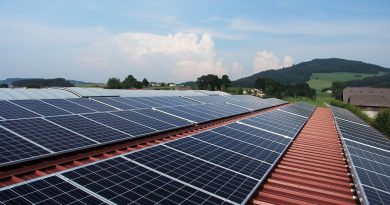How To Connect Solar Panels To Battery?
Connecting solar panels to a battery is crucial for storing energy for use when sunlight is not available. This blog will help you understand the steps involved, the importance of each component, and how to optimize the performance of your solar power system.
Table of Contents
- 1 Understanding Battery Types and Charging Requirements
- 1.1 Choosing the Right Charge Controller for Your System
- 1.2 Battery Connection Configurations
- 1.3 FAQs
Understanding Battery Types and Charging Requirements
Solar batteries store energy generated by solar panels. The main types of batteries used in solar systems are:
1. Lead-Acid Batteries: Affordable, reliable, but require regular maintenance. They have specific charging cycles.
2. Lithium-Ion Batteries: More expensive but have a longer lifespan and higher efficiency. They require precise charging control.
3. Gel Batteries: A type of Lead-Acid battery that is sealed and maintenance-free.
4. AGM Batteries: Another type of Lead-Acid battery with better performance and less maintenance.
Each battery type has unique charging requirements, such as specific voltage and current limits.
Choosing the Right Charge Controller for Your System
A charge controller regulates the voltage and current from the solar panels to the battery, preventing overcharging and damage.
a. PWM (Pulse Width Modulation): Simple and cost-effective but less efficient.
b. MPPT (Maximum Power Point Tracking): More expensive but significantly more efficient, especially in varying weather conditions.
When choosing a charge controller, consider the system’s voltage, the current rating, and the overall efficiency.
Wiring Diagrams and Connection Procedures
Basic Wiring Setup
1. Connect the Solar Panels to the Charge Controller:
- Ensure panels are producing voltage within the charge controller’s specifications.
- Connect the positive and negative terminals of the solar panel to the charge controller’s input terminals.
2. Connect the Charge Controller to the Battery:
- Connect the positive and negative terminals of the charge controller to the battery.
- Ensure proper polarity to avoid damage.
3. Connect the Load (if any) to the Charge Controller:
Some charge controllers have load terminals to directly power DC devices.
Example Wiring Diagram
- Solar Panel(s)
- Charge Controller
- Battery
Safety Considerations for Solar Panel Installations
- Always disconnect the system from power sources before performing any connections.
- Use insulated tools and wear appropriate protective equipment.
- Avoid working on solar systems in wet conditions.
- Ensure all components are rated for the system’s voltage and current.
Maintaining and Monitoring Battery Health
Regular maintenance and monitoring are crucial for battery longevity and performance.
- Voltage Checks: Regularly measure the battery voltage.
- Specific Gravity Tests: For Lead-Acid batteries, check the specific gravity of the electrolyte.
- Temperature Monitoring: Ensure batteries are kept within optimal temperature ranges.
Tips for prolonging battery lifespan include avoiding deep discharges, maintaining proper charge levels, and keeping batteries clean and dry.
Troubleshooting Common Connection Problems
- No Power: Check all connections, fuses, and breakers. Ensure solar panels are producing power.
- Low Charge: Verify the charge controller settings and panel output. Inspect for shading or dirt on panels.
- Overheating: Ensure proper ventilation. Check for loose connections that might cause resistance and heat buildup.
Advanced Wiring Configurations for Larger Systems
Series and Parallel Connections
- Series Connection: Increases voltage. Connect positive of one battery to the negative of the next.
- Parallel Connection: Increases capacity. Connect all positives together and all negatives together.
Example Setup for Larger Systems
For a system requiring higher capacity and voltage, combining series and parallel connections can achieve the desired configuration.
Battery Connection Configurations
| Configuration Type | Voltage | Capacity (Ah) | Example Use Case |
|---|---|---|---|
| Series | Higher | Same | High-voltage applications (e.g., inverters) |
| Parallel | Same | Higher | Extended battery life (e.g., backup power) |
| Series-Parallel | Higher | Higher | Large systems requiring both high voltage and capacity |
Conclusion
Connecting solar panels to a battery involves understanding the components and following precise steps to ensure safety and efficiency. By selecting the right battery, charge controller, and configuration, you can optimize your solar power system for reliable and sustainable energy storage.
Here at SolarClue®, we offer a smart, practical, and “beautiful” solution. You will be answered for all the questions related to Solar.
We provide all kinds of brands that are the Best Solar panels in India.
If you are the one who is planning for the solar power system. Don’t hesitate to contact our team!
Looking forward to empowering you with solar energy, just like hundreds of our other clients!
FAQs
1. What type of battery is best for solar systems?
Lithium-Ion batteries are generally the best due to their efficiency and longevity, but Lead-Acid batteries are more affordable and widely used.
2. Why is a charge controller necessary?
It regulates the voltage and current from the solar panels to protect the battery from overcharging and damage.
3. How often should I check my battery health?
Regularly, ideally once a month, to ensure optimal performance and longevity.
4. Can I expand my solar battery system later?
Yes, you can add more batteries in series or parallel configurations depending on your system’s needs.
5. What should I do if my system isn’t working correctly?
Perform a thorough check of all connections, settings, and components. Consult a professional if necessary.




